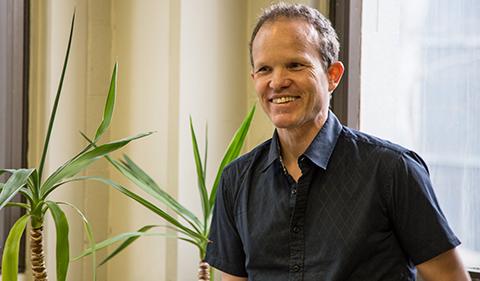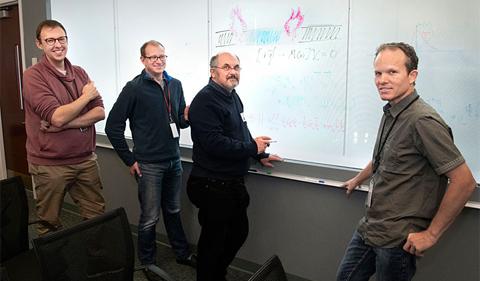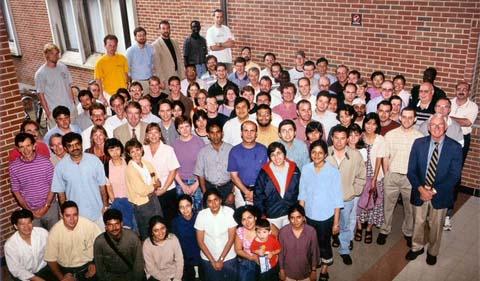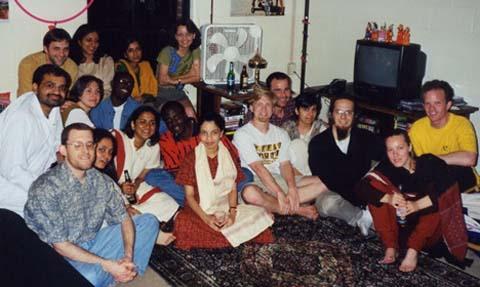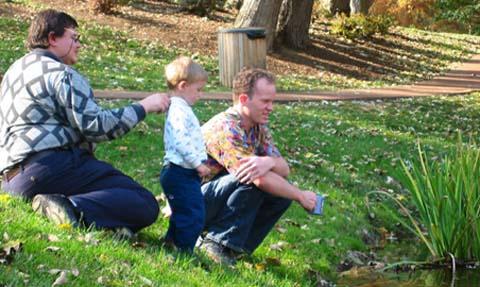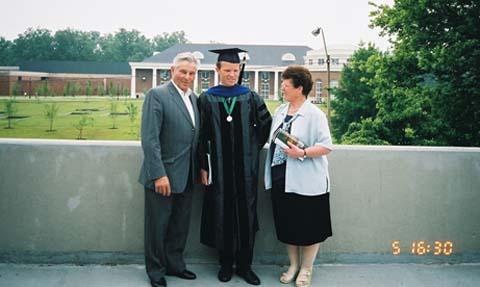
Notable Alumni | Andreas Weichselbaum Models Quasiparticles That Could Be Future of Quantum Computing

Editor’s Note: The College of Arts & Sciences Notable Alumni Awards (opens in a new window) honor alumni for broad career accomplishments, commitment to community service, and valuable contributions to Ohio University and the College of Arts & Sciences.
Andreas Weichselbaum ’04 Ph.D. Physics
Dr. Andreas Weichselbaum (opens in a new window) is working on tiny correlated puzzles in material science that could have a giant impact on the future of computing.
Weichselbaum is a theoretical physicist in the field of condensed matter and strongly correlated systems.
In a recent collaboration, for example, he and a team at Brookhaven National Laboratory (opens in a new window) and Germany proposed a novel theoretical method for producing more robust Majorana fermions. Splitting one electron in half results in a linked pair of Majorana quasiparticles, and the correlation of the linked particles could become a foundation for quantum computing.
“In other words, an electron becomes an entangled (linked) pair of two Majorana quasiparticles, with the link persisting regardless of the distance between them,” Brookhaven reports in Putting a New Spin on Majorana Fermions (opens in a new window).
Weichselbaum was honored when he came to OHIO to present an NQPI Seminar on “Non-abelian Symmetries and Applications in Tensor Network States (opens in a new window)” on Feb. 13.
“Scientists hope to use Majorana fermions that are physically separated in a material to reliably store information in the form of qubits, the building blocks of quantum computers. The exotic properties of Majoranas—including their high insensitivity to electromagnetic fields and other environmental ‘noise’—make them ideal candidates for carrying information over long distances without loss.
“The team plans to follow up their theoretical study with experiments using engineered systems such as quantum dots (nanosized semiconducting particles) or trapped (confined) ions. Compared to the properties of real materials, those of engineered ones can be more easily tuned and manipulated to introduce the different phase boundaries where Majorana fermions may emerge,” the article continues.
In 2018, Weichselbaum joined the Condensed Matter Physics & Materials Science Department (opens in a new window) of Brookhaven National Laboratory as a staff scientist.
He earned a Ph.D. in Physics from the College of Arts & Sciences at Ohio University. His focus was in theoretical condensed matter physics, with his thesis on “Nanoscale quantum dynamics and electrostatic coupling.”
After OHIO, he accepted a postdoc position at the Ludwig-Maximilians Universität in Munich in Germany. In 2008 he joined the University of California at Irvine as a visiting researcher before heading back to Munich for a habilitation (venia docendi). He was an independent researcher since 2011, and was awarded a Heisenberg Fellowship in 2015 funded by DFG (opens in a new window), the German research foundation. His work included research in computational condensed matter theory and large-scale computational projects on cutting edge research (strongly correlated systems).
“My continued focus has been on the numerical simulation of nanostructures. Starting with my postdoc, I had moved into the field of strongly correlated systems, using numerical renormalization group techniques to study nanosystems embedded in dissipative environments” he writes on his homepage (opens in a new window).
“Quantum-many-body systems in and out of equilibrium in the presence of interaction offer many interesting open questions, given that strong correlation can lead to new emergent dynamical effects such as Kondo physics. In their exploration, besides analytical approaches, the access to quasi-exact numerical methods provides an extremely valuable perspective.”
OHIO Memories
“I very much learned to appreciate the diverse and international atmosphere at Ohio University. Arriving as a bunch of new grad students from all over the world for an academic year, one naturally became a rather tight community as one started to find one’s way together around that endeavor commonly referred to as doctoral studies, irrespective of where one was coming from,” Weichselbaum notes. “My most cherished memories from that time belong to the very welcome frequent dinner invites from Indian fellow students and dear friends which were always a wonderful way to unwind at the end of a long day. Below is a picture of a party crowd at their place.”
“I am very grateful that also my parents could make it to OhioU for the commencement ceremony at the end of my Ph.D., their only time ever traveling to the United States,” Weichselbaum added.


